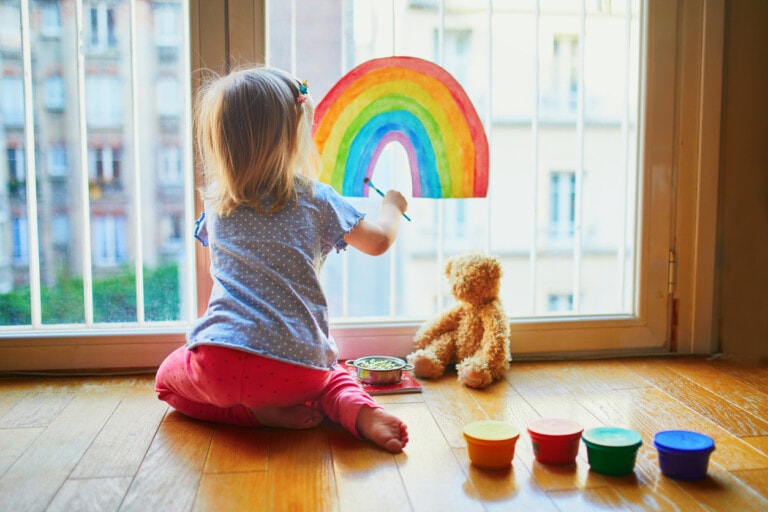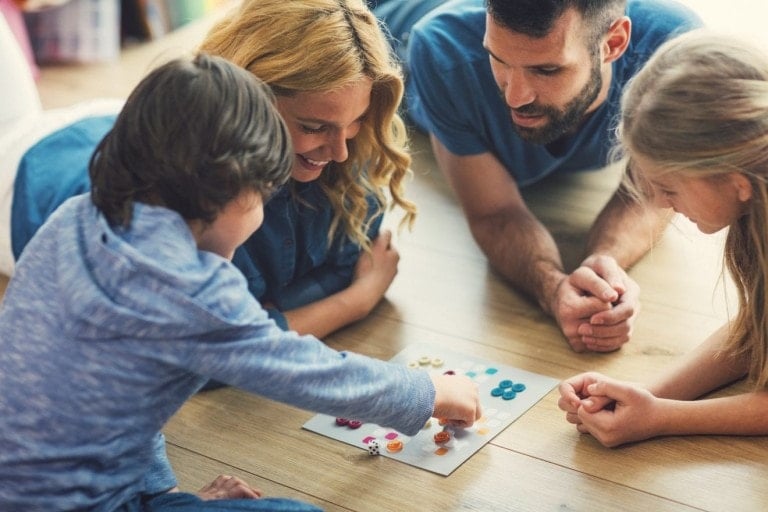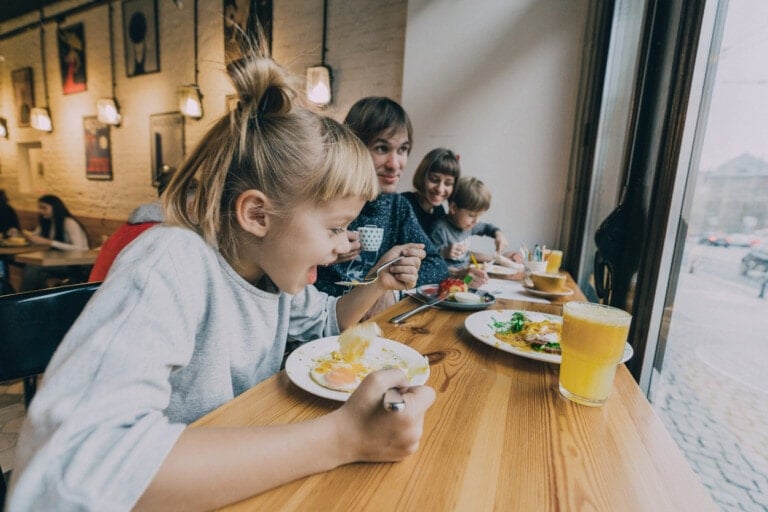One of the greatest challenges as a parent of toddlers and preschoolers is when they start skipping their naps. On the one hand, it might be nice to go to the zoo for the day or grab lunch with friends and not stress about getting home in time for that essential afternoon snooze. However, as a mom who had three babies in five years, I can attest to how much I needed them to nap. That’s why, when kids were old enough to start skipping their daily nap, we implemented a daily “quiet time activities” period in our house, which was beneficial to all of us as the kids got a chance to rest, and Mom got a break. But to make “quiet time” work, parents need to have an arsenal of quiet activities for kids ready and available to keep their little ones engaged.
I started “quiet time” early with my kids because, much to my dismay, my older two started skipping naps at age two. But an advantage I did have, despite having nap-skipping two-year-olds, was that they were responsible at a young age and could play quietly and unsupervised in their rooms. We always had activity books, dolls, toys for pretend play, and a bin of Legos ready to be built. The kids got a much-needed reset, and I got a break from “Mommy, mommy, mommy,” a bit of peace and quiet, and a chance to recharge.
20 Quiet Activities for Kids
If you’re sensing that your toddler or preschooler is starting to hit the stage where they need some “down time” but maybe not “nap time,” check out these quiet activities for kids that can keep them entertained while they give their little bodies (and their exhausted parents) a rest.
1. Montessori Busy Books

There’s a reason Montessori Busy Books are all the rage among parents of littles when it comes to quiet activities for kids. With their touchably soft felt pieces, moveable and interactive parts, and page after page of engaging activities, tiny hands will be entertained for a long time with a good Montessori Busy Book.
2. Pretend Play

Buy Kitchen Here Buy Little People Set Here
Some kids only need a bin of dolls or stuffed animals, and their imaginations will do the rest. Maybe you can put the play kitchen in your child’s room for quiet time and let them “cook” dinner and serve it to their “friends.” Or store your toddler’s collection of Little People in the corner — kids love their Little People sets. Whatever tends to engage your child in authentic pretend play, make sure some of those items are in their bedroom or whatever space they are spending quiet time in, and your kid will know what to do.
3. Draw
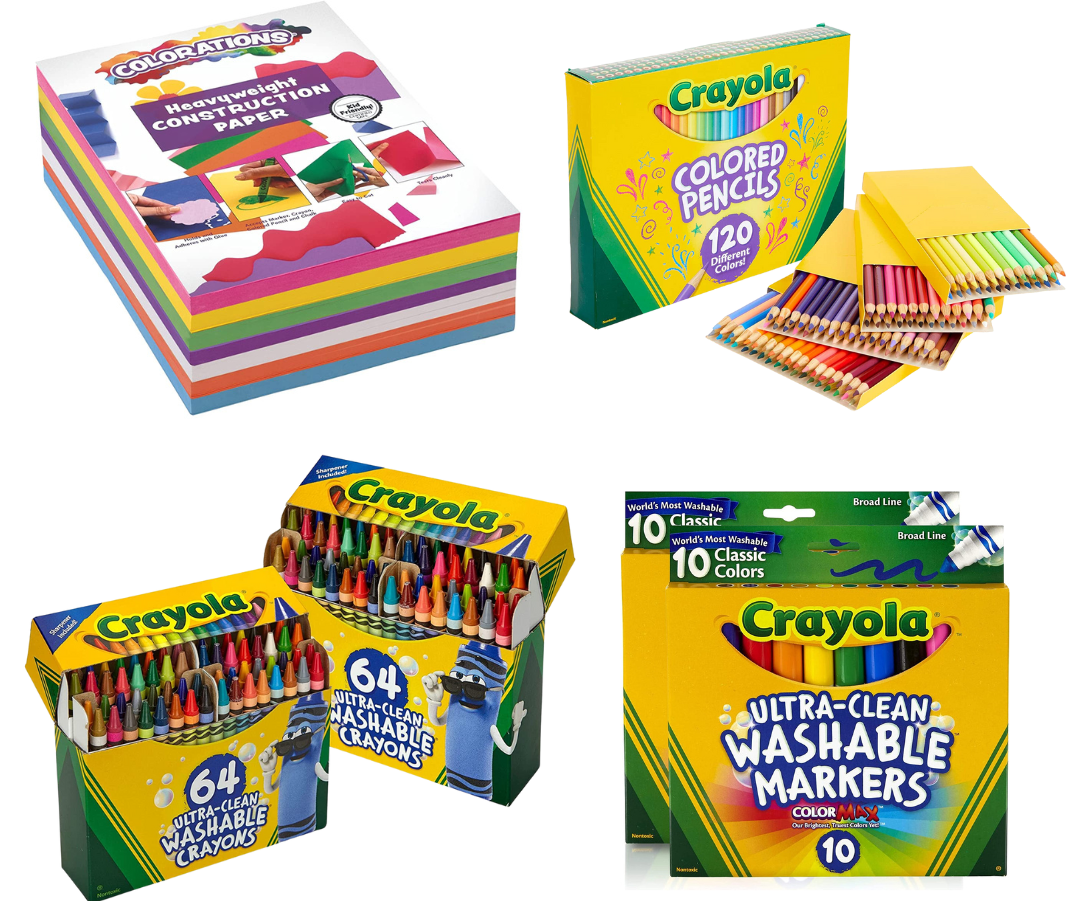
Buy Paper Buy Colored Pencils Buy Crayons Buy Markers
Have a budding artist on your hands? Stock their shelves with paper, crayons, colored pencils, and washable markers (if you dare), and wait for the masterpiece they’ll stick on the fridge in about an hour. Everyone wins with free time to draw during this quiet activity for kids.
4. Memory Matching Games
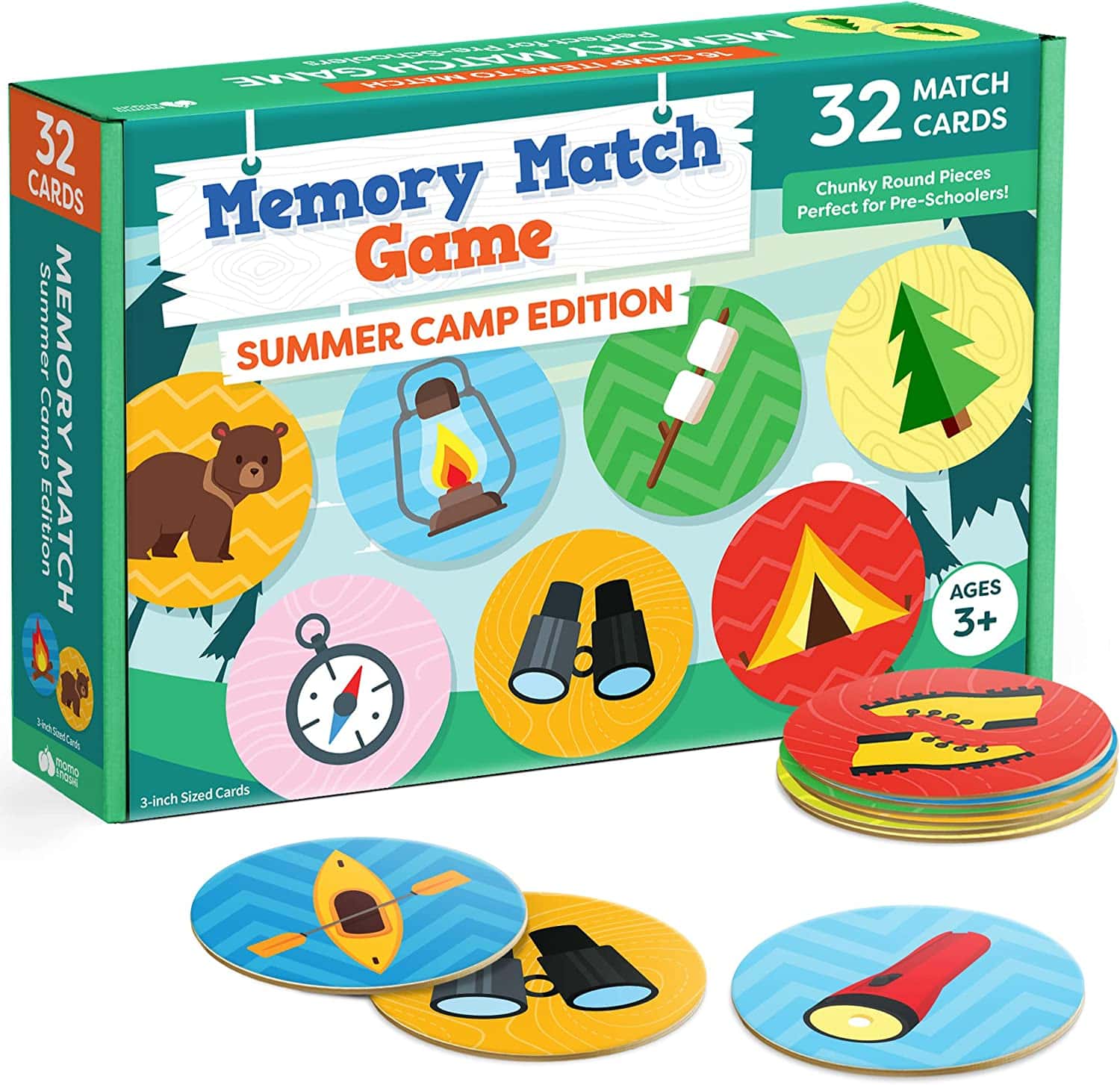
Memory card games are the perfect activity for quiet time because kids can play the entire game alone. Over the years, my kids have had Star Wars, Paw Patrol, and Disney princess matching games. There’s a version for every kid, and they are usually very affordable. Plus, they can also play with a friend, a sibling, or a parent later when quiet time is over. Either way, memory matching stimulates brain activity, so this one’s a must-have quiet activity for kids.
5. Activity Books
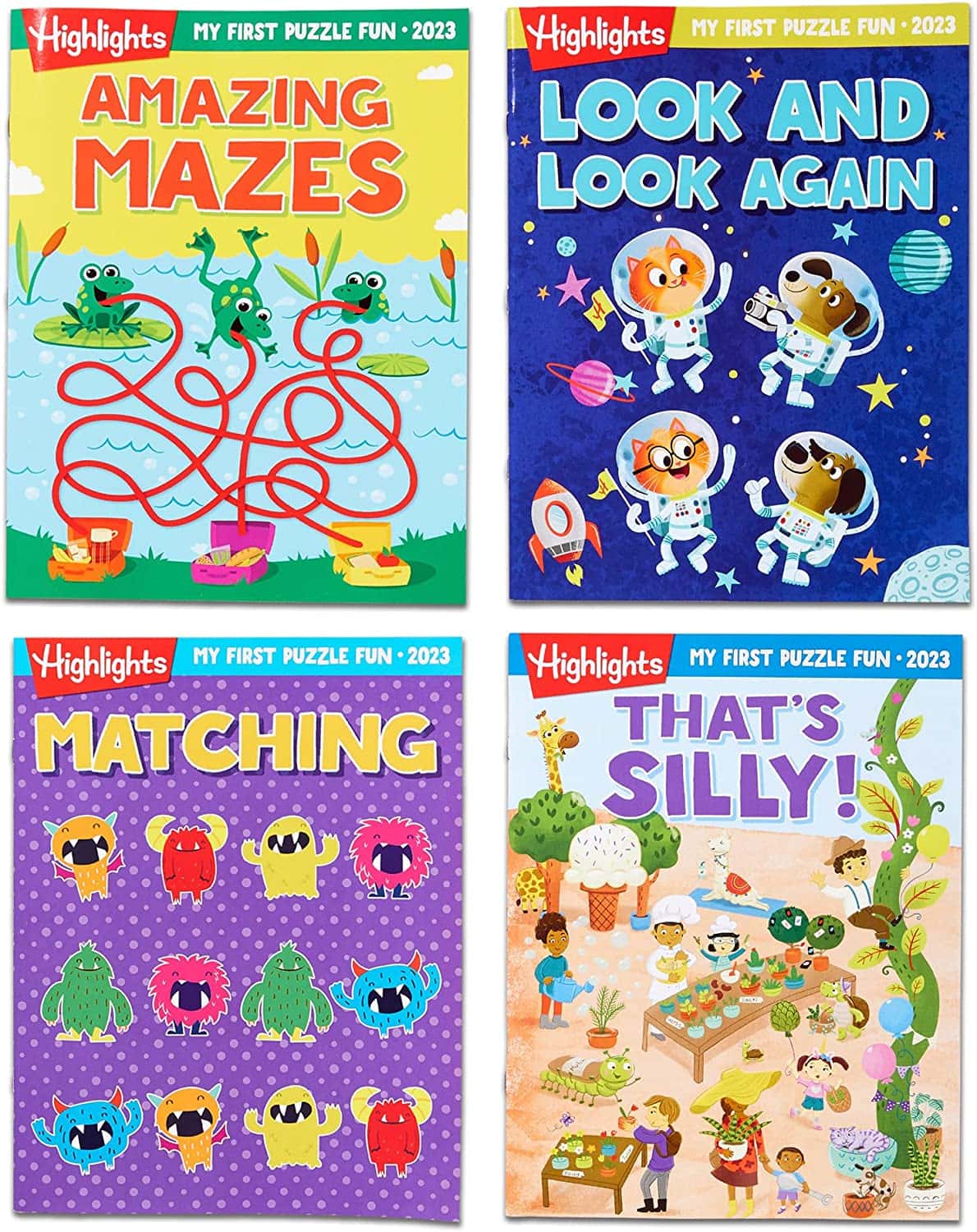
Puzzle Buzz and Highlights offer great activity books for kids of this age. They can complete interactive pages like seek and find, sticker matching, and simple mazes. Pro tip: Sign up for a subscription so a new one arrives every few weeks. Young ones love getting mail, and now you have continuous quiet activities for kids coming in!
6. Color
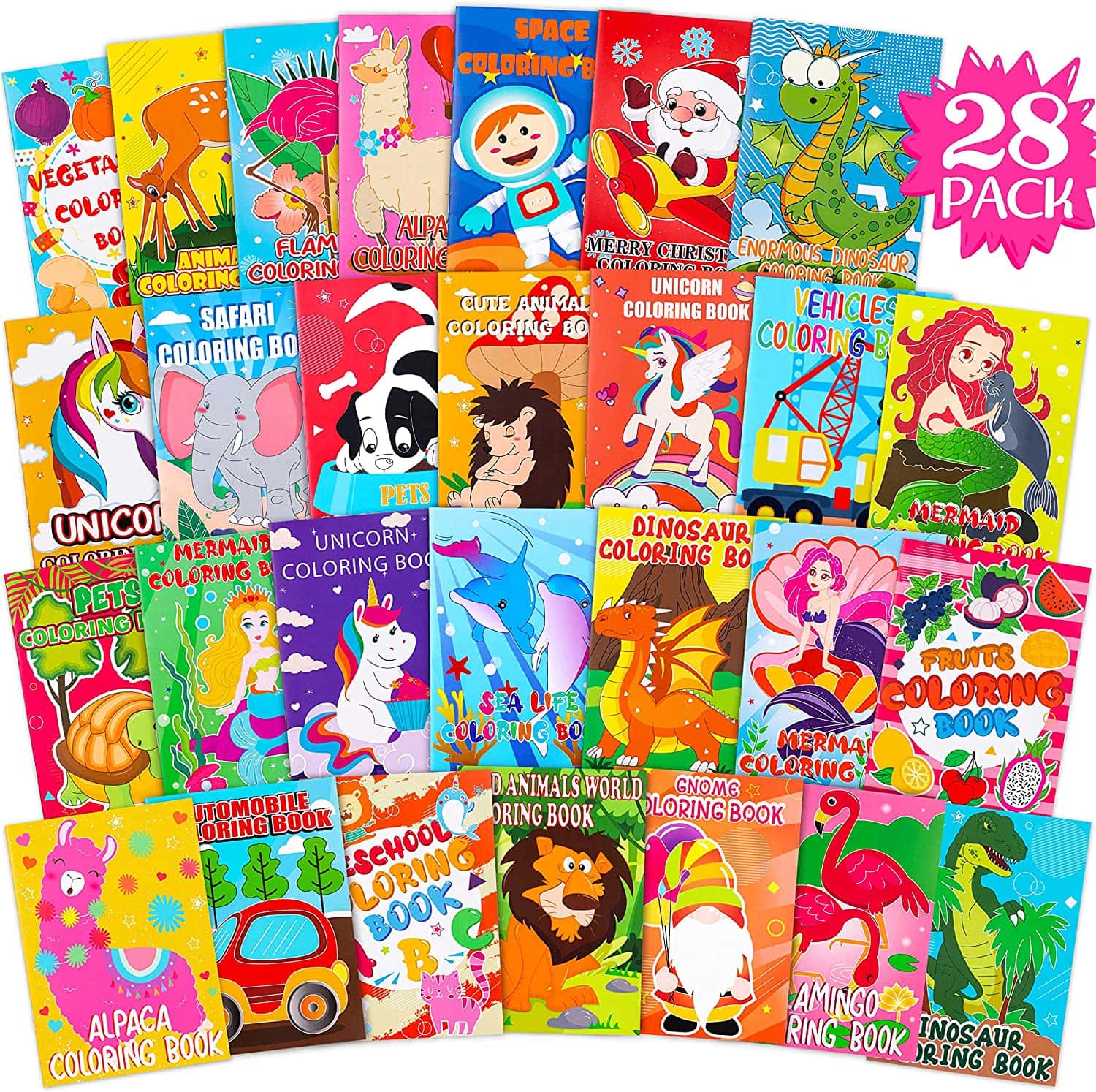
There’s a reason why grown-up coloring books are so popular. Coloring is calming and soothing for all ages and is never a bad choice for a toddler or preschooler’s quiet time. Stock your child’s room with some coloring books and crayons, then quietly tiptoe out of the room. They won’t even know you’re gone.
7. Puzzles
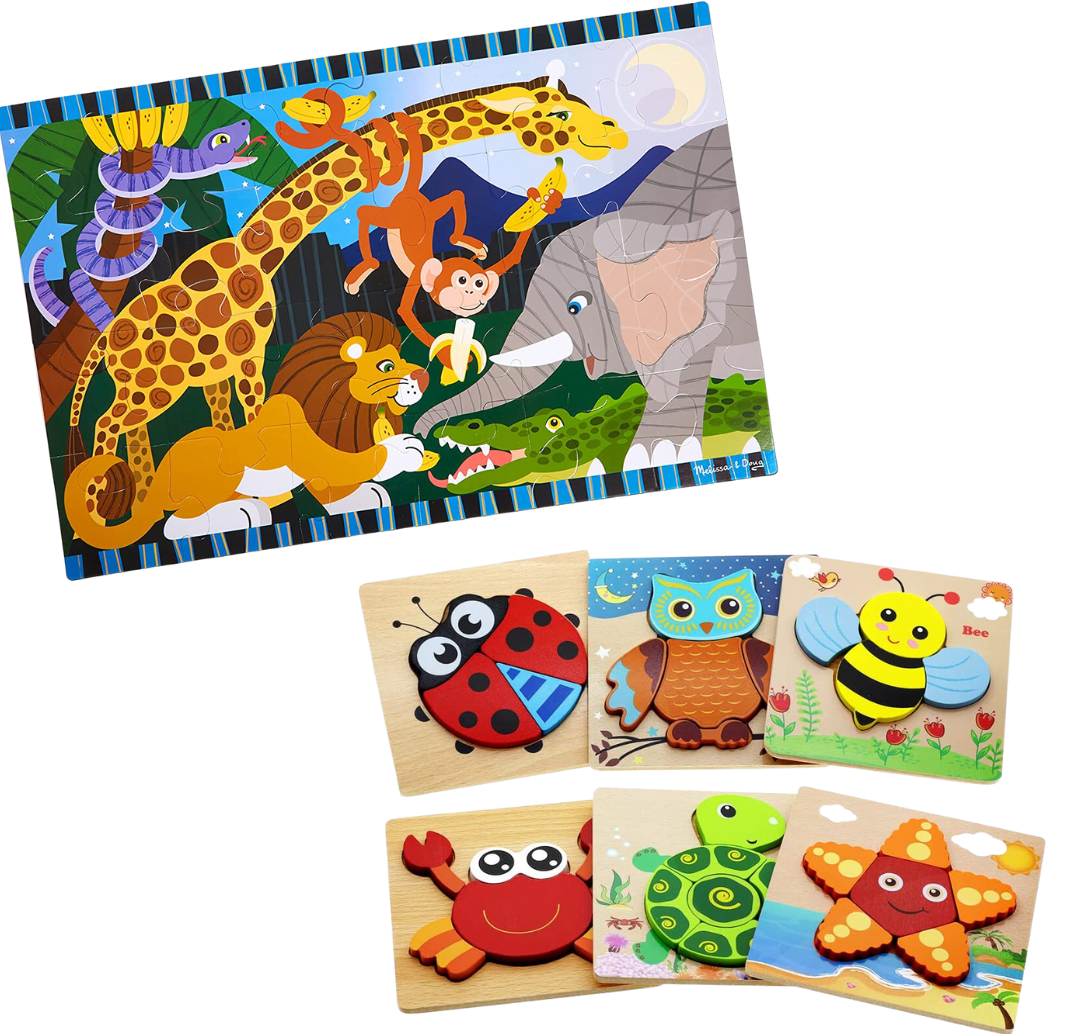
Buy Giant Floor Puzzle Buy Wooden Puzzles
From giant floor puzzles to smaller wooden puzzles with 10 pieces, there are choices for quiet activities for kids for every age range and every interest. My daughter loved animals as a toddler, so we had all sorts of farm puzzles, safari puzzles, puzzles with reptiles, puzzles with cats, and puzzles with birds. She loved them all, and they kept her quietly playing while Mom got a much-needed break.
8. Building Blocks and Legos
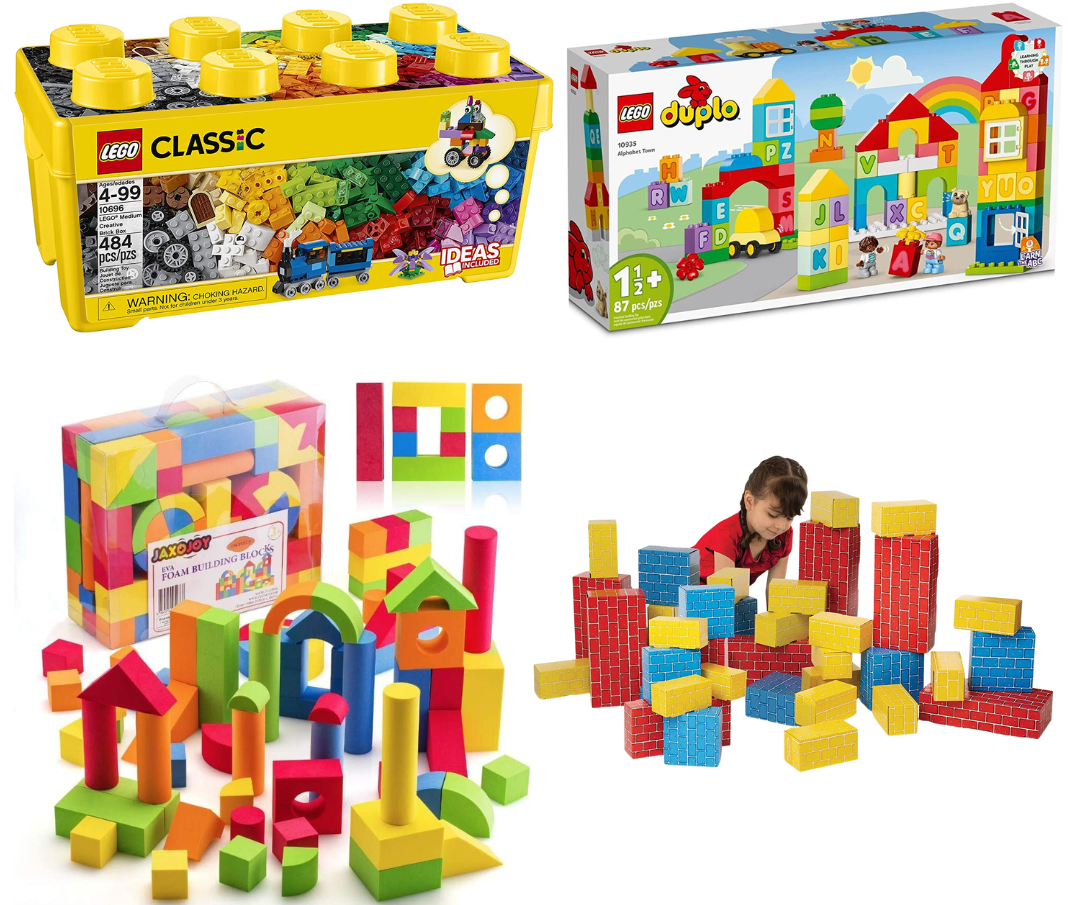
Buy Legos Bin Buy Duplos Buy Foam Building Blocks Buy Cardboard Bricks
If your child loves to build, provide them with building materials, and you’ll be ready. A bin of Legos or Duplos might do the trick, or foam building blocks might be a better choice. How about cardboard bricks? Anything that can help spark their imagination and let them build a wall, a fort, or a castle will work perfectly as a quiet activity for kids.
9. Reusable Sticker Books or Colorforms

Buy Reusable Sticker Books Buy Colorforms
Reusable stickers or colorforms provide endless entertainment for little ones, so parents everywhere are grateful. Plus, they aren’t permanent, so you don’t find stickers forever glued to your wooden furniture once quiet time is over.
10. Audio Books

This quiet activity for kids lets your child get started early on the wonders of audiobooks. If their favorite book is “Where The Wild Things Are,” press play and let someone else read it to them while you get some time to yourself.
11. Magna-tiles
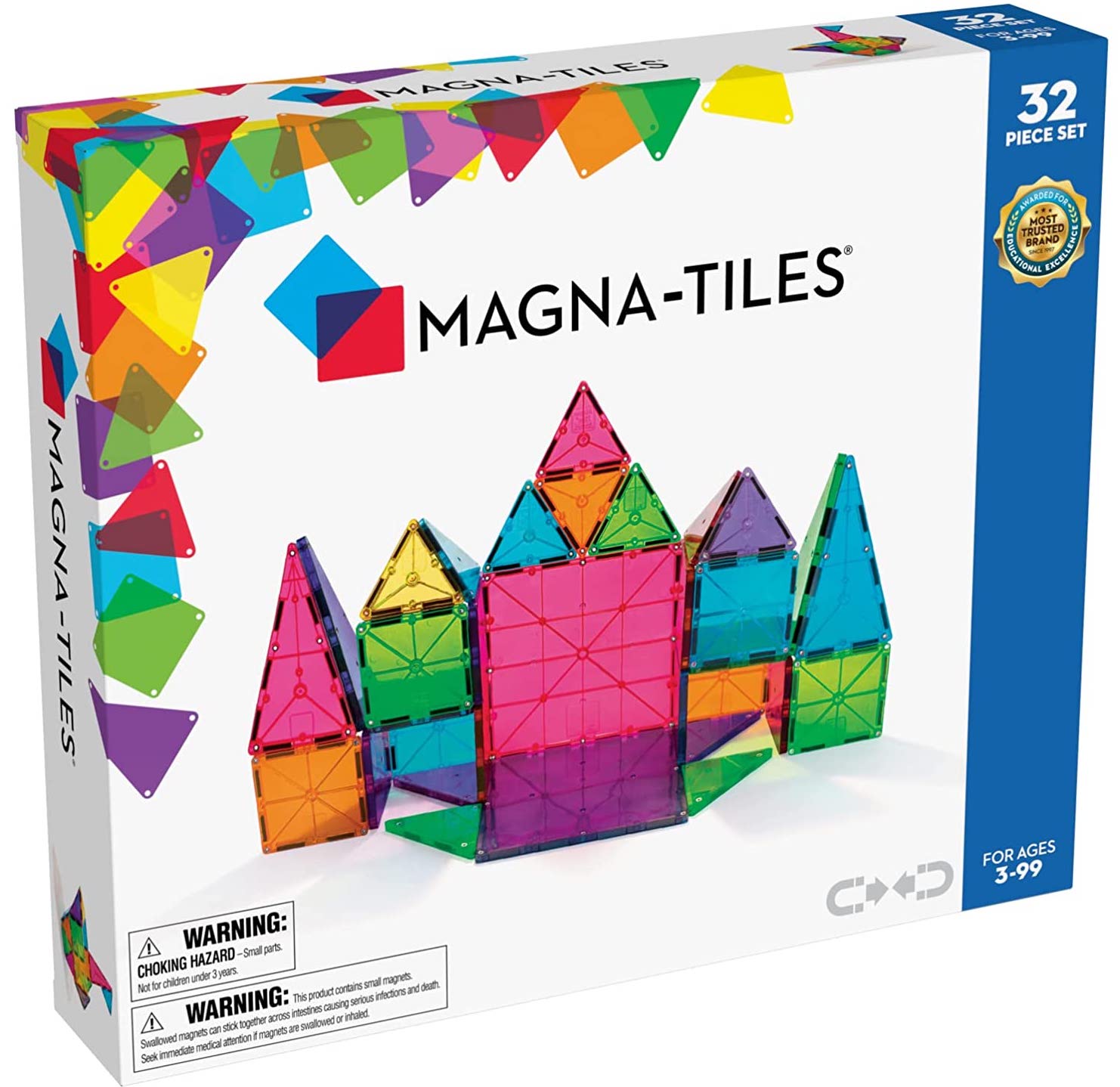
I don’t know what it is about magna-tiles, but they are magic. Snapping these brightly colored shapes together and pulling them apart was the only quiet time activity that worked for my third kid, who struggled to be still. Books? Nope. Coloring? Not a chance. But magna-tiles got him to sit still for a few minutes, and I’ll always be grateful.
12. Reusable Water-Based Books
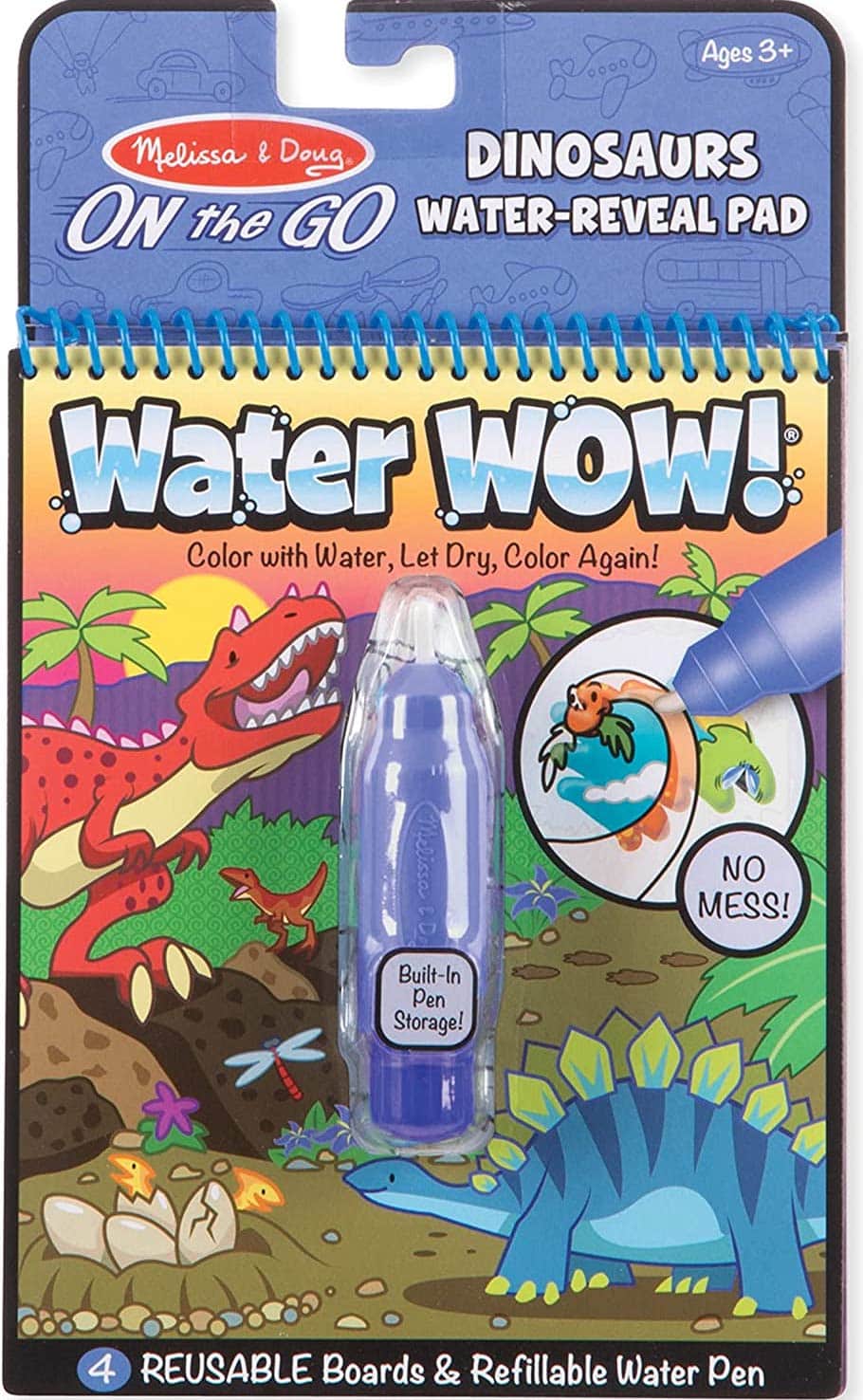
Water Wow! books by Melissa and Doug are a lifesaver for road trips and airplane travel, but guess what? They’re great as a quiet activity for kids too. Kids color each page, watching animals, shapes, and colors appear, and then they eventually dry and can be used again. A life-changing invention.
13. Magnetic ‘Paper’ Dolls
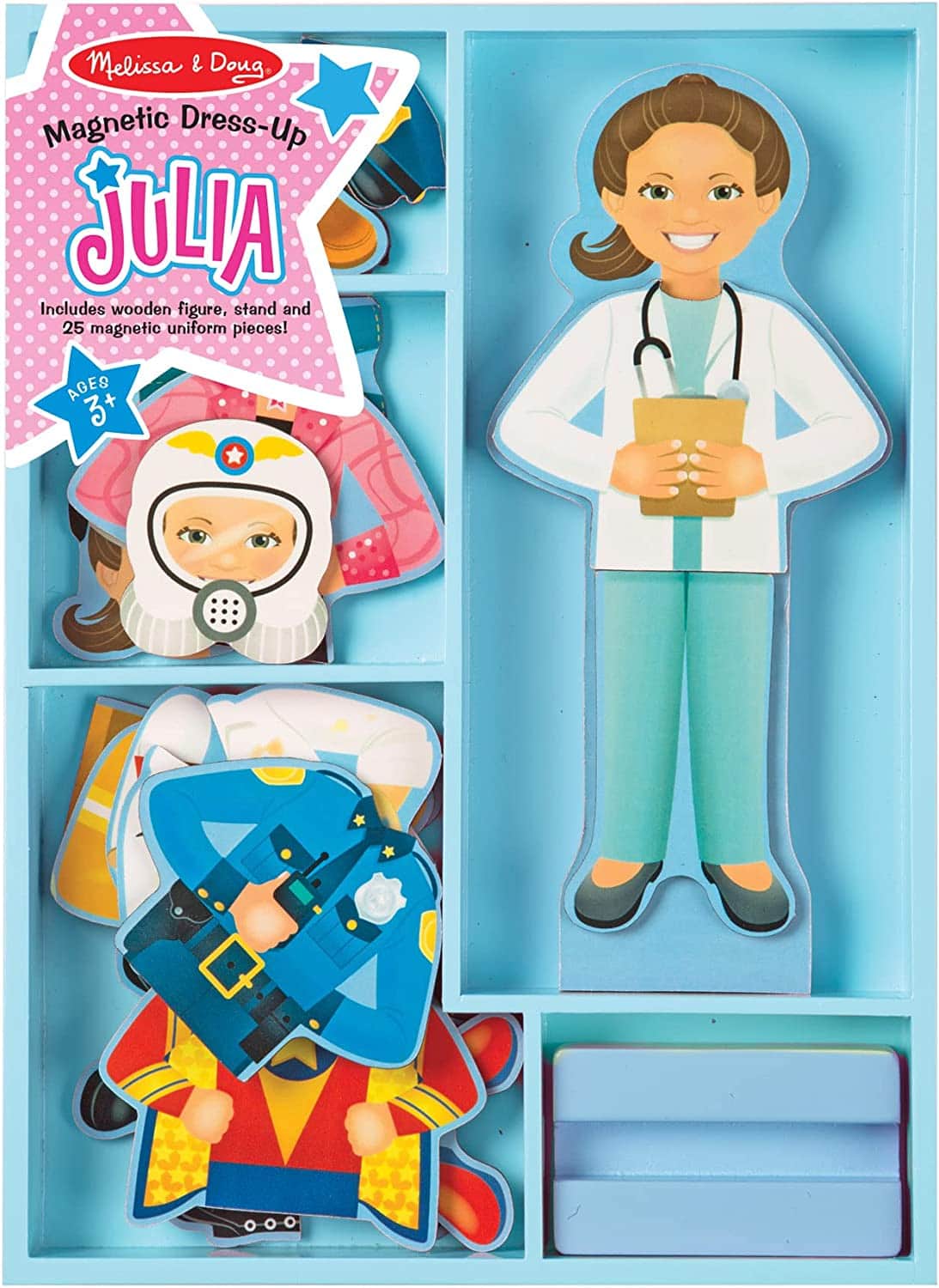
An oldie but a goodie. Paper dolls entertained us as kids, and they’ve made a comeback. Only now, they come with magnetic, reusable pieces (yay!). Kids can dress up their dolls in various outfits, mix and match, and enjoy endless play time with this classic toy.
14. Cars and Trains
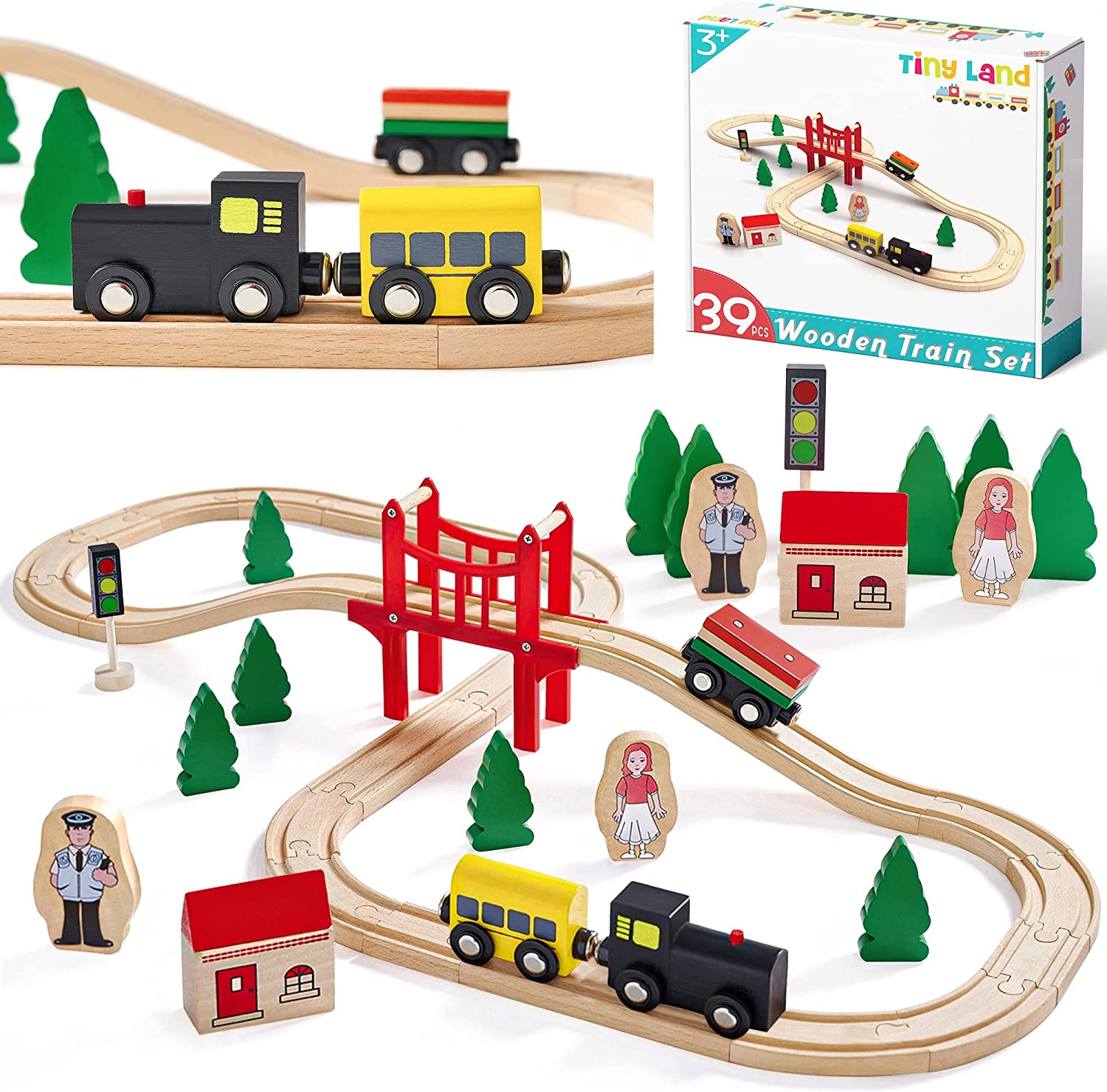
We invested in a wooden train set when my oldest was a toddler, and it was the best thing we ever did. Hours of his life were spent snapping tracks together, building new track routes, running the trains over the tracks, taking them apart, and rebuilding. He’d cover his entire room with the most intricate track systems imaginable. Kids who love trains and cars can create racetracks with masking or painter’s tape, or you can even invest in an area rug with race tracks right on it. Just let them zoom!
15. Magnetic Letter and Number Boards
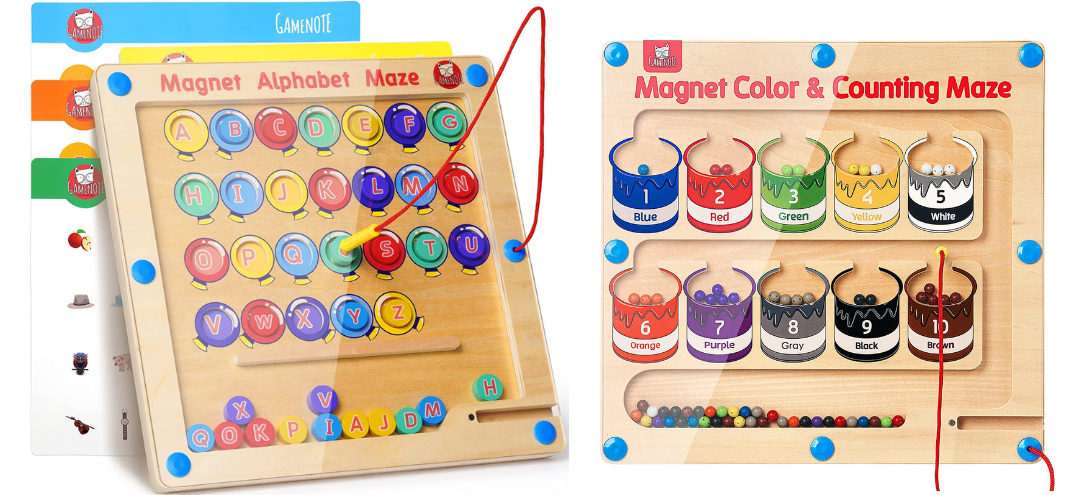
Buy Letter Board Buy Number Board
Letter and number boards and puzzles are a fun way to help kids learn while also getting some downtime. And it helps that the pieces are magnetic, so it’s harder to lose them. Our favorites were magnetic wooden boards by Melissa and Doug, which even said the letters and numbers as the pieces went in, making this quiet activity for kids even more fun.
16. Hand-Eye Coordination Stringing Activities
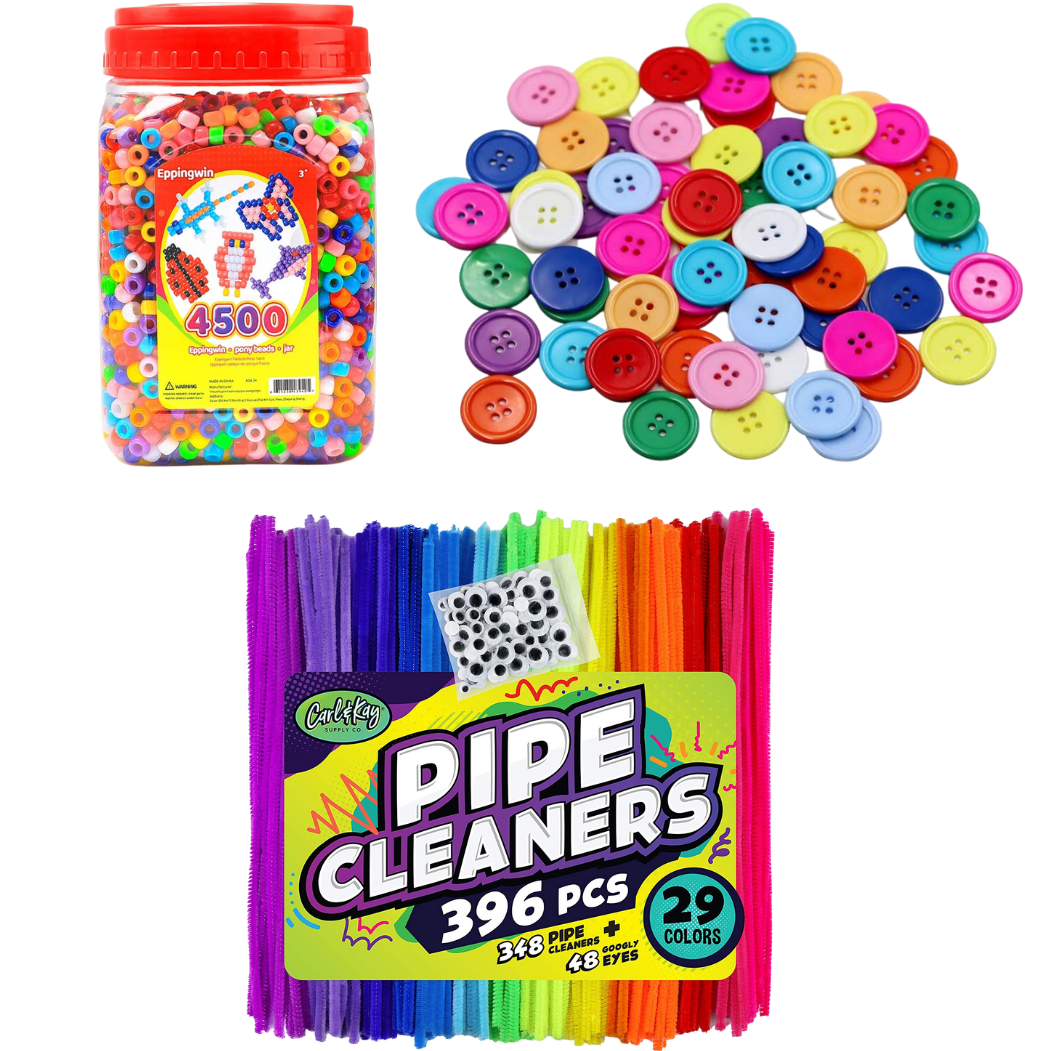
Buy Beads Buy Buttons Buy Pipe Cleaners
Have your toddler string beads or buttons onto pipe cleaners or crazy straws. With this quiet activity, kids love seeing what they create while practicing hand-eye coordination and strengthening their dexterity. Plus, they’ll stay quiet for a bit.
17. Contact Paper Art
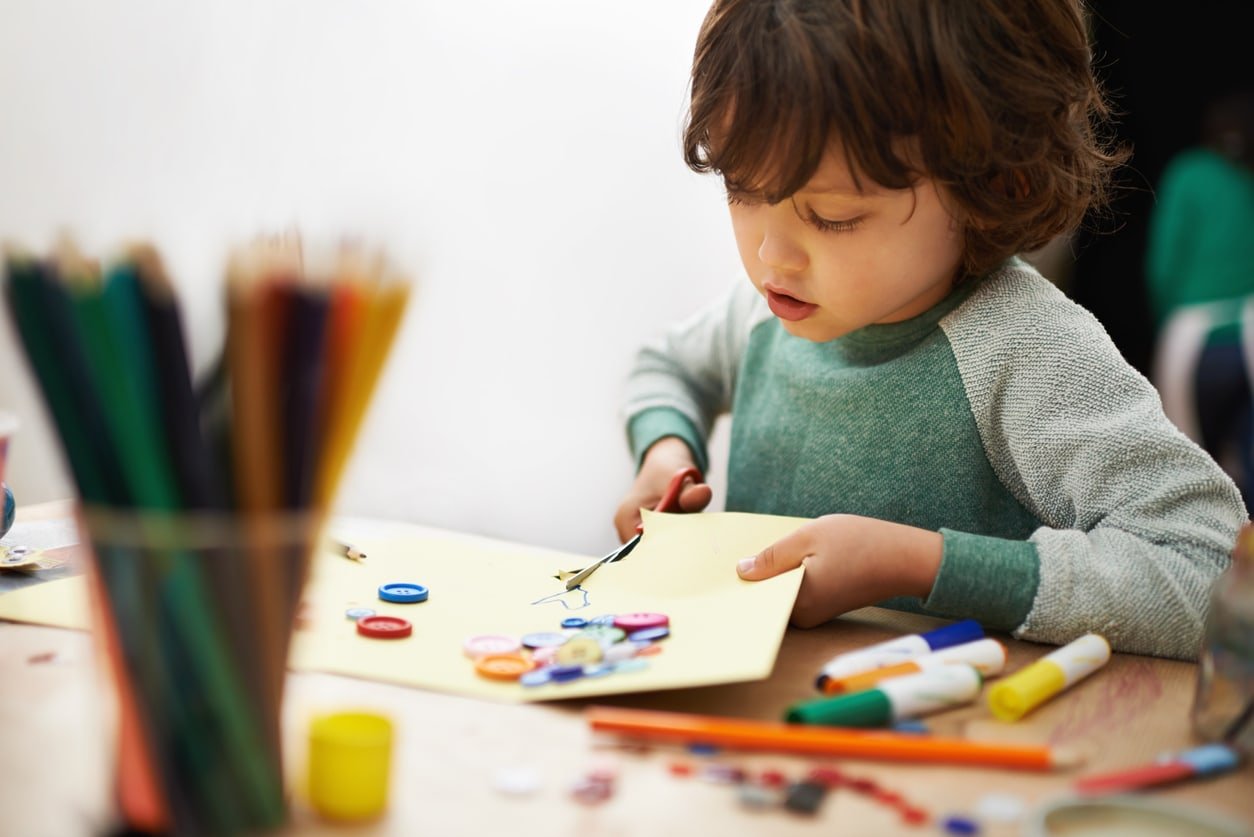
Stick a sheet of contact paper (sticky side up) to the table or wall, using painter’s tape for a border. Then let your child stick whatever random craft supplies you can find on it to make “art.” Hand them a bin of cotton balls, old buttons, googly-eyes, bits of ribbon, and wrapping paper, and watch the creativity soar.
18. Tablet or iPad Games

No shame in using screen time as quiet time. Downtime is essential, and playing a matching game on a kids’ app on the tablet is just as good as playing it with real cards. Either way, your child is resting and resetting, and so are you.
19. Watch a Show
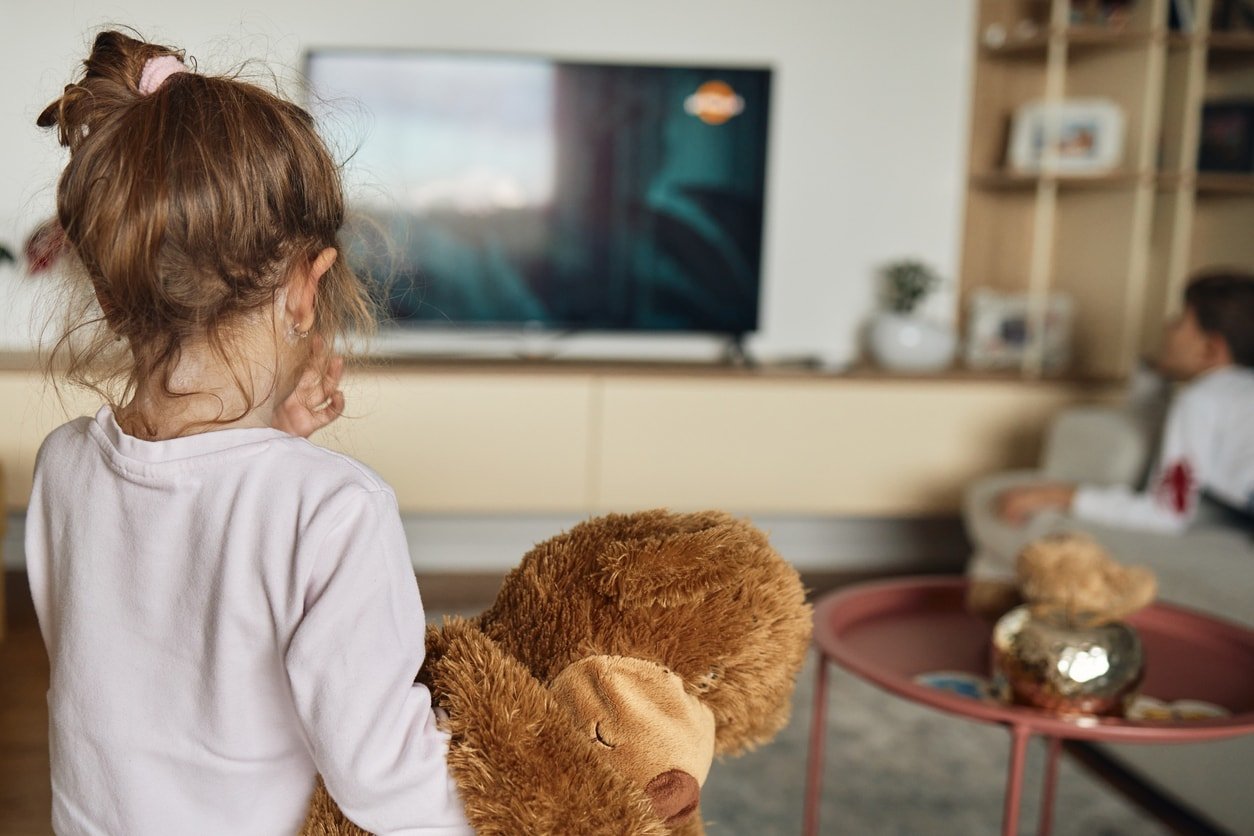
I know I love to lounge before a favorite show for downtime, and so do my kids. Whether on the TV in the living room or an iPad in their bedroom, pressing play to let your child decompress while watching Daniel Tiger might be just what they need.
20. Quiet Time in a Fort
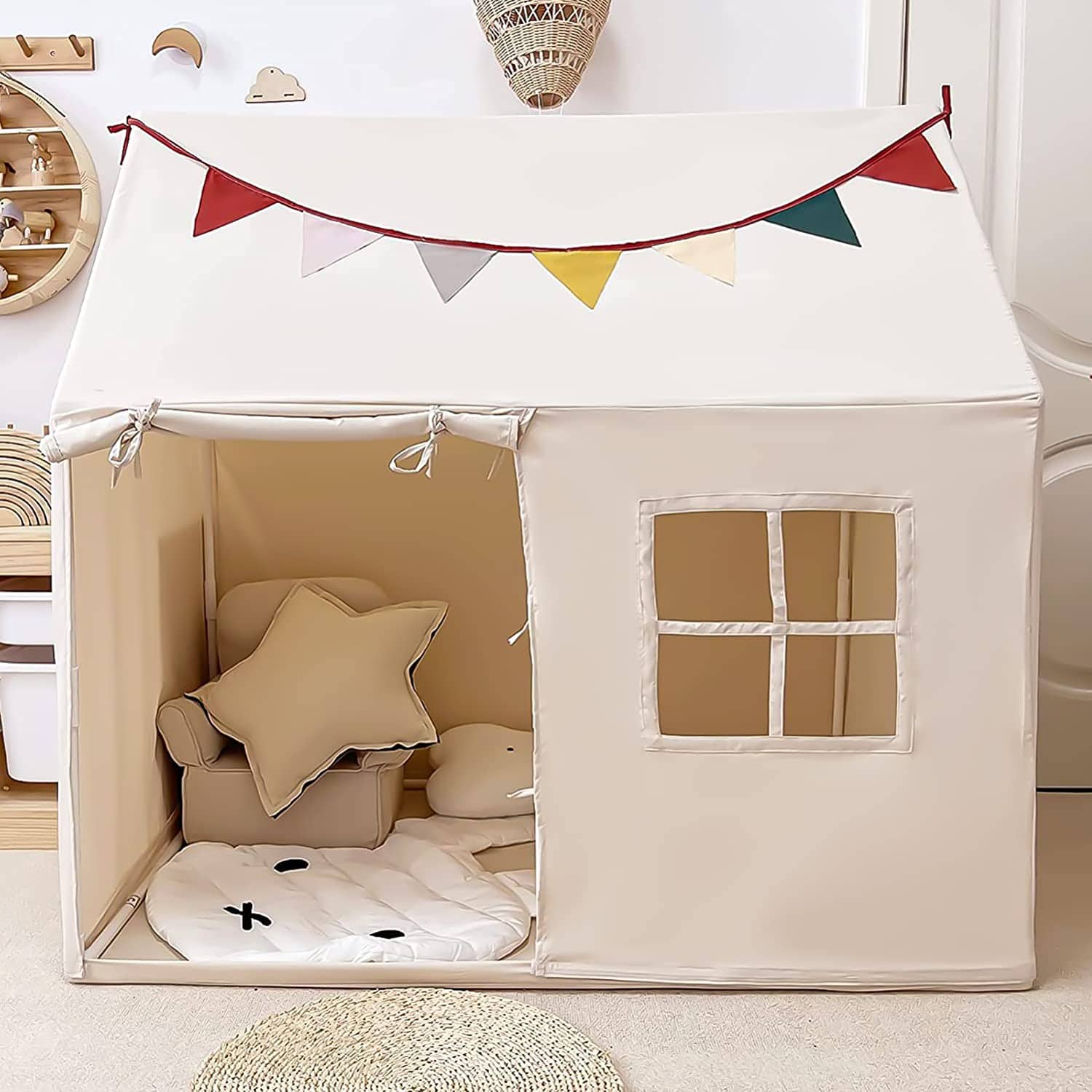
Reading, watching an episode of Bluey, or coloring a picture; it’s always much more fun in a fort, right? You can create a temporary fort with a blanket tent or a permanent nook in your child’s room or closet where they can enjoy their quiet time now that they are a “big kid” and don’t need to nap anymore. But they’ll be more likely to stay there, meaning the house stays quiet if they have some space for their afternoon rest.
The key is to be consistent and start a “quiet time” routine early on. If your child knows that every day at 2 p.m., it’s time to go to their room with their favorite activity books or a Lego bin, they are less likely to fight you about it. And honestly, they might look forward to it! Kids are more intuitive than we give them credit for, and often even they will know they need a break. So, try out a few of these quiet-time options for your newly minted nap graduate, and enjoy the quiet time yourself, Mom. Maybe reheat and finally enjoy that coffee you forgot to drink all morning.





















